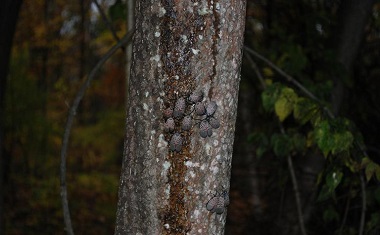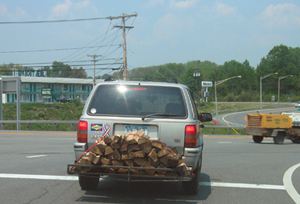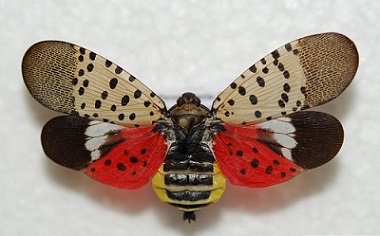 Earth Matters focuses on conservation, sustainability, recycling and healthy living. This weekly series is brought to you by Maria Luisa Boutique and Strawtown Studio and Summer Play Camp at Blue Rock School and Dying To Bloom, a natural burial boutique for humans and pets. Applications are now available for the ML by Maria Luisa Scholarships for the 2018-2019 year. The application deadline is March 16, 2019. If you are concerned about climate change and its environmental impact, come to a screening of the movie Seed and a discussion of concrete actionable ideas and specific ways to get involved locally with your children to restore and preserve the earth’s precious resources on Thurs, Feb 28 at 6:30p at Blue Rock School, 110 Demarest Mill Rd, West Nyack, NY.
Earth Matters focuses on conservation, sustainability, recycling and healthy living. This weekly series is brought to you by Maria Luisa Boutique and Strawtown Studio and Summer Play Camp at Blue Rock School and Dying To Bloom, a natural burial boutique for humans and pets. Applications are now available for the ML by Maria Luisa Scholarships for the 2018-2019 year. The application deadline is March 16, 2019. If you are concerned about climate change and its environmental impact, come to a screening of the movie Seed and a discussion of concrete actionable ideas and specific ways to get involved locally with your children to restore and preserve the earth’s precious resources on Thurs, Feb 28 at 6:30p at Blue Rock School, 110 Demarest Mill Rd, West Nyack, NY.If Earth Matters to you, sign up for our mailing list and get the next installment delivered right to your inbox.
by Jennifer J. Lerner
Here in the Hudson Valley, we have weathered waves of invasion… insect invasion, that is. Think of the multicolored Asian lady beetle buzzing around your house, soon replaced by the brown marmorated stinkbug dive-bombing your reading light at night. Then came the emerald ash borer. And now our native ash trees, their bark chipped away by woodpeckers foraging for larvae, stand as reminders that our actions have far-reaching impacts. Enter the newest invader: The Spotted Lanternfly (Lycorma delicatula), a colorful insect in the planthopper family that congregates in large numbers to feed on the sap of trees. As it feeds, it excretes “honeydew,” a nice name for what is essentially a sticky excrement. That honeydew sometimes alerts people to the presence of the pest.
While the honeydew is a nuisance, the strain placed on the trees’ resources by insects feeding weakens and kills the tree. The Spotted Lanternfly’s preferred host, the Tree-of-Heaven (Ailanthus altissima), is also an unwanted invader despite its heavenly moniker. Great, you say? Maybe the Lanternfly will polish off the Tree of Heaven? Well these gregarious insects have a few more tricks up their spotted sleeves.
How did they get here?
The Spotted Lanternfly (SLF) is native to China, India, and Vietnam. This insect was introduced into South Korea and spread throughout the Pennsylvania-sized country in three years. On this continent, an initial infestation was found in Berks County, Pennsylvania, in 2014. This first infestation is thought to have arrived on a shipment of stone in 2012.
Why are we worried?
Like the brown marmorated stinkbug, Spotted Lanternflies are a pest of some important agricultural crops. They feed on and harm many fruit-producing plants, including apples, peaches, plums, blueberries, and grapes, as well as approximately 70 other plants. Besides the far-reaching economic impacts, there are ecological considerations. Many of these trees and shrubs have relatives in our native ecosystem. For example, our native Shadblow–or Serviceberry (Amelanchier sp.)–is a close relative of the apple and provides important forage for migratory birds who return to their nesting sites expecting to find its nutritious early fruits. Imagine the hole their loss would make in our ecosystem. And right now, we simply do not know how many host plants this insect can survive on or how wide their impact will be.

Adult SLF (wings closed), and oozing wounds on a tree. Photo: Pennsylvania Department of Agriculture
How can you help?
Keep on the lookout and report your observations. Learn to recognize the insects themselves, as well as the signs of the Spotted Lanternfly. While the insect may be easy to spot because of its bright spots, the egg masses are harder to locate. They are tan to light grey, laid in closely-spaced rows, and often covered with a mud-like protective layer. If you see the insects or spot the egg clusters, please report the sighting to the New York State Department of Environmental Conservation (spottedlanternfly@dec.ny.gov). Digital photos are helpful, too. While sticky honeydew is another sign of these sap-feeding insects, many other insects also excrete honeydew in quantities sufficient to make cars, fences, and deck surfaces feel tacky. As this sugary honeydew accumulates, it may also support the growth of Sooty Mold fungus. This black fungus may coat leaves, fences, and cars, another sign that sap-feeding insects are present.

Moving untreated firewood is a main way invasive pests and diseases are spread to new areas. The SLF attacks a long list of agricultural, wild and ornamental plants. Photo: NYS DEC
Don’t help them hitch a ride!
Though Spotted Lanternflies may hitch a ride on a boat, trailer, or vehicle, their egg clusters pose the most insidious risk because the female will lay them on just about anything. (Watch a video of a female laying eggs, courtesy of New York State Integrated Pest Management.) Hitchhiking egg masses can be found on pallets of stone, firewood shipments, Christmas trees, and outdoor furniture. Remember: Never take firewood from your home to a favorite campground or weekend retreat. Similarly, don’t pick up wood from far away and bring it home as you may be bringing a hidden invader with you. Observe the “Don’t Move Firewood” rule. Inspect boats and trailers for hitchhiking egg masses. If purchasing used outdoor furniture, or items frequently stored outside like garden tools or wheelbarrows, check all surfaces for egg masses. Yes, the adult insects can fly, but they spread much more quickly when humans help them along.

Known distribution of the spotted lanternfly as of February 2019. Map courtesy Cornell University, New York State Integrated Pest Management
How far have Spotted Lanternflies spread?
Currently, the insect is found in 13 counties in southeastern Pennsylvania, and these and many other Pennsylvania and New Jersey locations are under New York State quarantine. We know from Korea’s experience that this insect spreads fast. In 2017, one dead insect was found in Delaware County, New York. And 2018 saw isolated SLF adults or egg masses in Albany, Chemung, Monroe, Suffolk, and Yates Counties, as well as Brooklyn and Manhattan–all thought to be hitchhikers. So far, there are no known New York reproducing populations.
Let’s work hard to keep it that way!
Jen Lerner is a Senior Resource Educator with Cornell Cooperative Extension of Putnam County, and is a Lower Hudson Partnership for Regional Invasive Species Management (PRISM) partner.
Learn more:
- “Stinkbug Wars” (Nyack News and Views, 3/14/18)
- “Spotted Lanternfly” (New York State Department of Environmental Conservation)
- “Spotted Lanternfly” (Cornell College of Agriculture and Life Sciences)
- “Spotted Lanternfly” (U.S. Department of Agriculture)
Read Earth Matters every Wednesday on Nyack News And Views, or sign up for the Earth Matters mailing list.
Earth Matters, a weekly feature that focuses on conservation, sustainability, recycling and healthy living, is sponsored by Maria Luisa Boutique, Dying to Bloom, Strawtown Studio, and Summer Play Camp at Blue Rock School.













